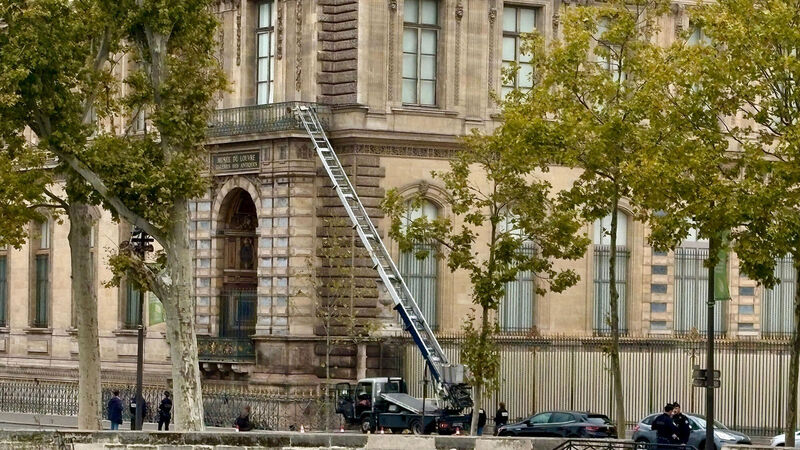Colin Sheridan: Louvre thieves didn't just steal some rocks, they stole France's national pride

The basket lift used by thieves at the Louvre last Sunday. It took them seven minutes to steal the jewels. Picture: AP Photo/Alexander Turnbull
There's always been a certain romance to a heist. From to and , the thieves move with an elegance the rest of us reserve for weddings and funerals.











